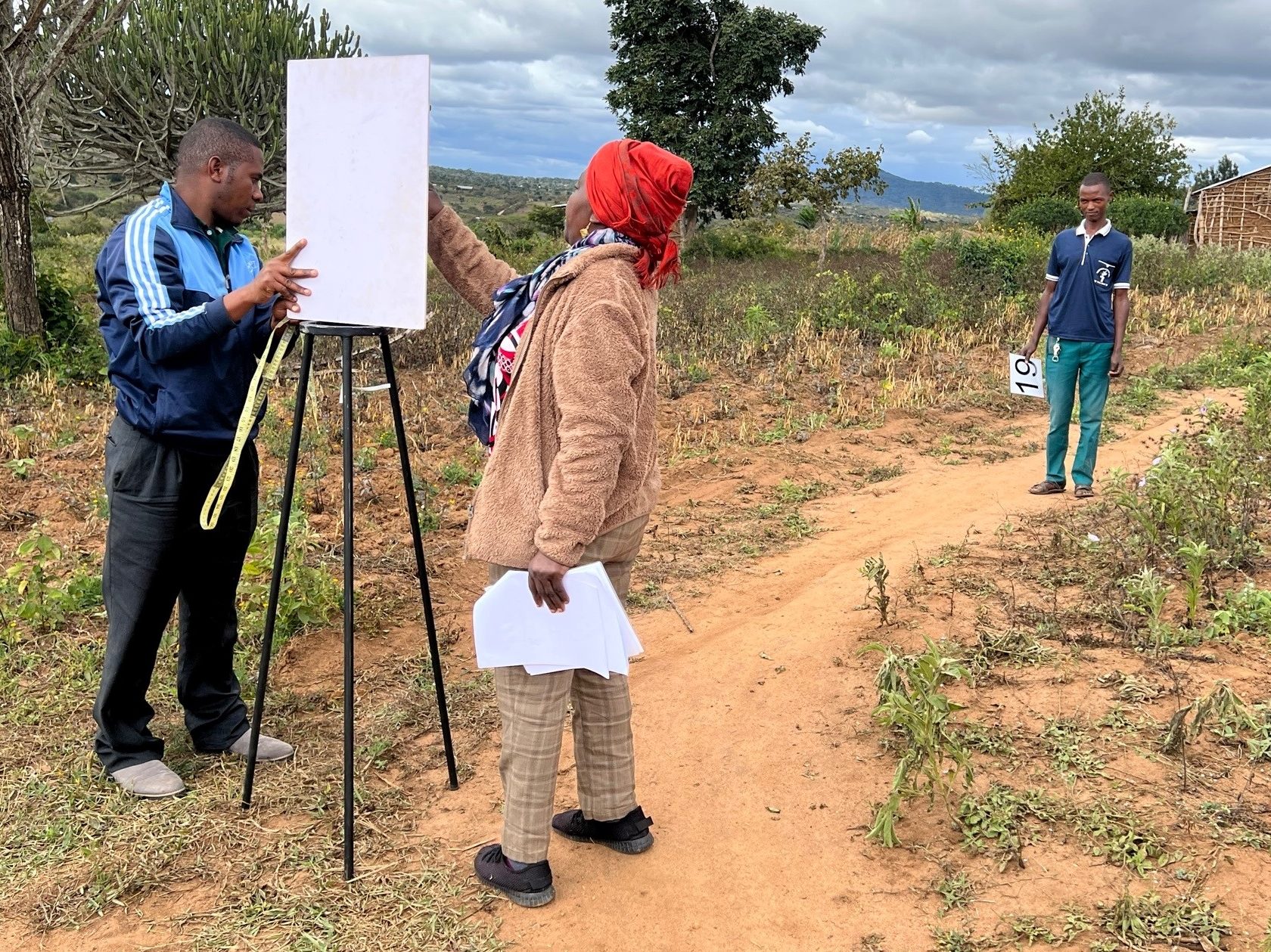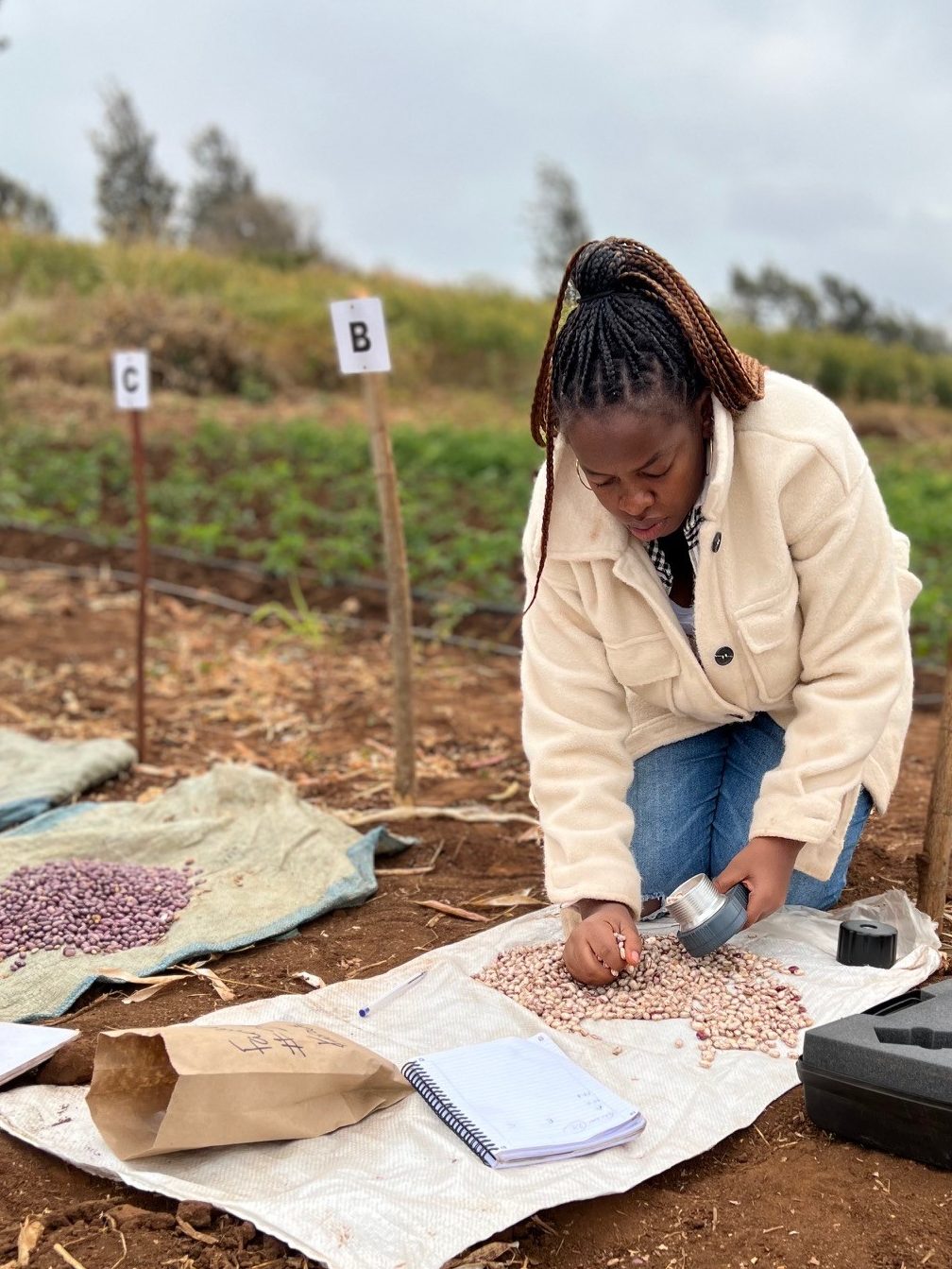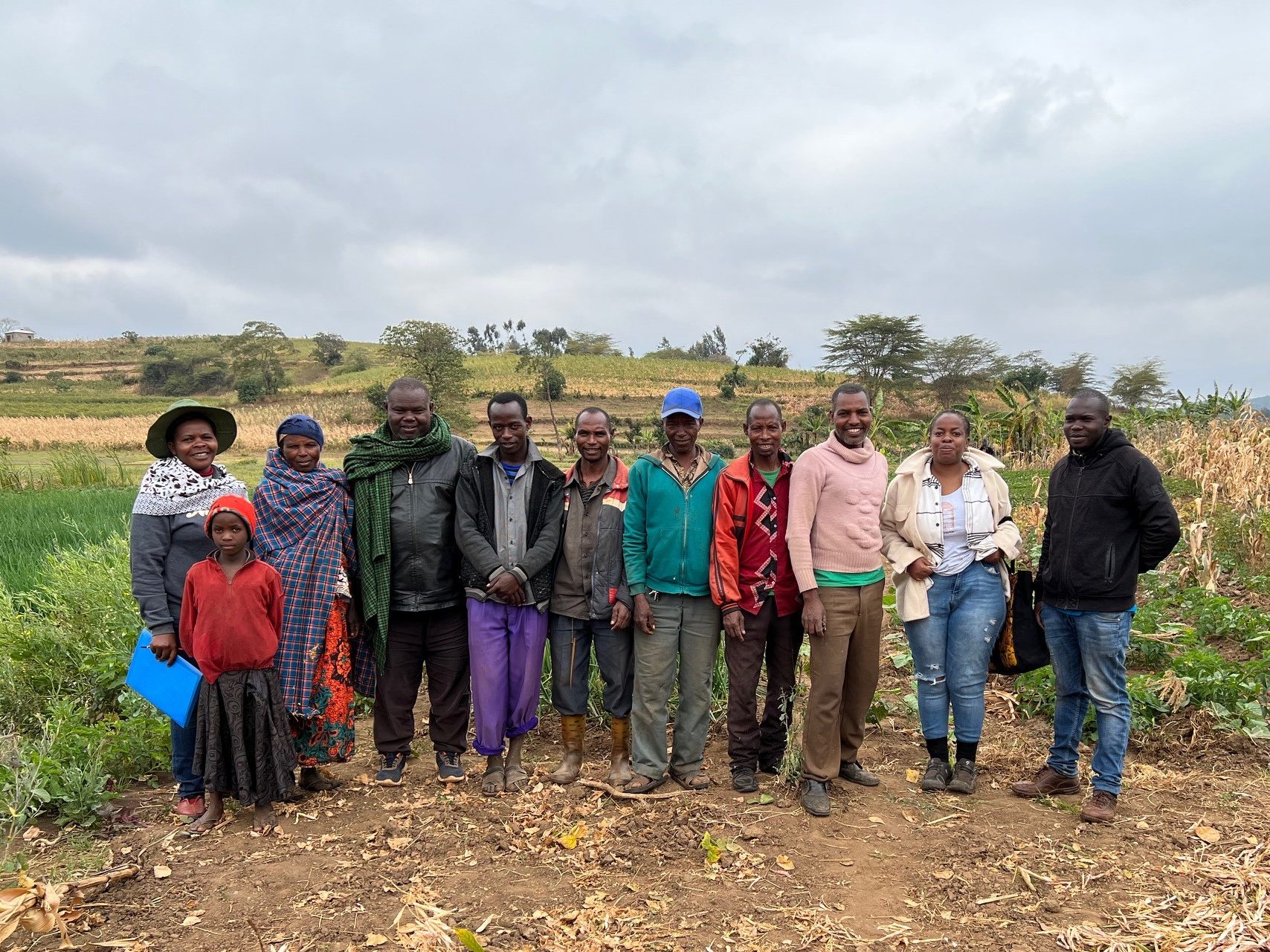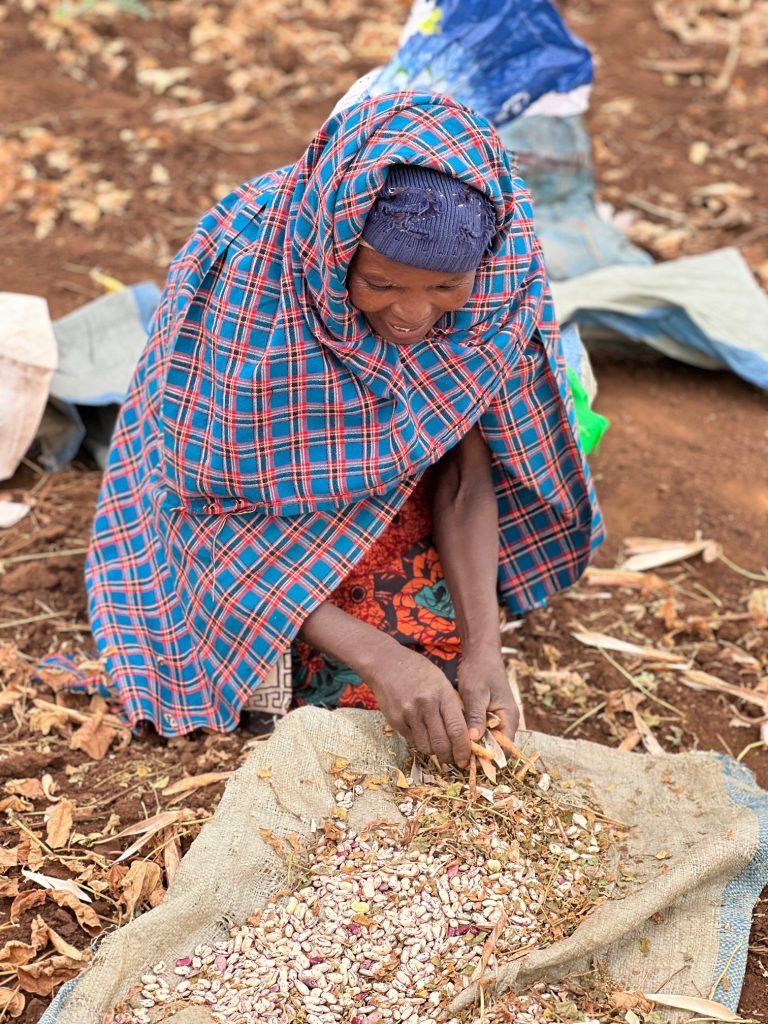12 October 2022
PhD student Mabel Nabateregga explains how farmers, particularly women, can benefit from citizen science trials.

A few months ago, as part of my ongoing doctoral studies, I had the opportunity to survey farmers and their crop yields in Tanzania. My team at the Inland Norway University of Applied Sciences interviewed 30 farmers who were participating in “tricot” – triadic comparison of technologies – trials in the Kilindi and Karatu districts in the northern highlands of Tanzania. Originally developed in 2011 (van Etten 2011), tricot (pronounced “try-cot”) brings a citizen science approach to crop trials. Rather than testing new crop breeds exclusively in the lab, tricot encourages testing in the field by the farmers who will potentially use the crops in their daily life.
This decentralized, participatory approach has helped demand-led breeding programs select crop genotypes best suited to local conditions and farming practices (van Etten et al., 2019). Studies have also shown that the tricot approach can produce more accurate estimates of crop yields in real-world settings. Our survey aimed to add to the growing body of tricot knowledge by finding out if farmers’ crop yield estimates are sufficient and suitable to inform breeding and variety release decisions.
Farmers invested in the tricot approach

We collected data on farmer demographics and collected yield measurements taken by farmers and field agents, as well as other yield-related measurements. We also conducted acuity and literacy tests and asked questions about plot size estimation and farmer motivations. The data on farmer demographics was collected to help us understand how farmers’ characteristics and experiences influence the accuracy of their yield estimates. For the farmer-led yield estimates, we recorded ethnographic observations and videos as farmers took volumetric measurements of yield using one-liter tins. To validate and calibrate these farmer measurements, field agents also took volumetric and absolute measurements of yield. The acuity and literacy tests, meanwhile, will be used to evaluate the effects of farmer acuity and literacy on their ability to accurately measure yields in the field. Other important data that we collected during our survey included farmers’ estimates of plot size, their approaches to determining soil fertility and their motivations. Even though the interviews were long – typically lasting 90 to 120 minutes – all the farmers we met were eager to participate. This demonstrates that the farmers were deeply invested in the tricot approach.

Throughout our survey, we were greatly moved by the farmers’ enthusiasm to participate in the tricot activities and interviews. Most farmers were motivated to take part by the expectation that they would receive improved seed varieties and improve their farming practices. However, many were also motivated by a desire to share information, help others and to work with scientists. Indeed, most farmers were proud of the fact that they had the opportunity to contribute and participate in a country-wide study that would benefit farmers across Tanzania. This enthusiasm could be seen in the low number of farmers who left the study. This willingness to participate in these tricottrials could be attributed to the fact that the project implementers and field agents had clearly communicated the objectives and benefits of farmer participation at the beginning of the tricot trials.

Previous studies (e.g., Marchant et al., 2019) have shown that farmers have conducted trial-and-error experiments for centuries to learn about their production systems, and thus already know how to design trials and make useful observations. We saw this for ourselves as we recorded farmers making observations about the best-performing crop varieties, estimating yield or determining adequate seed moisture content using their own methods. Our observations prove that involving farmers in research can help bridge the gap between farmer and formal innovation and thus increase the practical impact of agricultural research. We also observed that farmer innovation and practice differed from village to village and sometimes from farmer to farmer. Understanding farmer characteristics and the socio-economic structure of the population is therefore important when developing tailor-made solutions and successfully implementing them on farms.
Women’s essential role in smallholder farming

Most importantly, we witnessed the important role that women play in smallholder agriculture. Women make essential contributions to the agricultural and rural economies in all developing countries. Although only 16% of survey participants were women, their experiences and perspectives were very critical to our study. According to a study by Raney et al. (2015), the labor burden of rural women exceeds that of men and includes a higher proportion of unpaid responsibilities. Weeding and harvesting, for example, are predominantly female activities. For example, in Karatu District we interviewed Mbare Gelasi and his wife, Gelasi Muso. Mrs. Gelasi Muso harvested the tricot fields and contributed to answering the interview questions.

In Kilindi District, we interviewed a group of eight farmers led by Amina Rajabu Manyehe, a woman farmer. Amina shows what women can contribute when given the access and opportunities that are readily available to men. The role of women in agricultural production has often been neglected and their influence in decision-making is restricted compared with men. Nevertheless, we strongly believe that the tricot approach presents an opportunity to involve marginalized groups and ensure equal representation of women in agricultural research and innovation.
Our experience with the farmers of Karatu and Kilindi was very enlightening. The farmers believe that the tricot approach can revolutionize their work and provide solutions to their most pertinent needs. We believe that the approach is a useful intervention to ensure food and nutritional security and to meet the demands of a rapidly growing population, especially against a backdrop of increasingly frequent extreme weather events. We also believe the tricot approach will play an important role in promoting gender inclusivity, which is crucial for innovation in smallholder agriculture.




